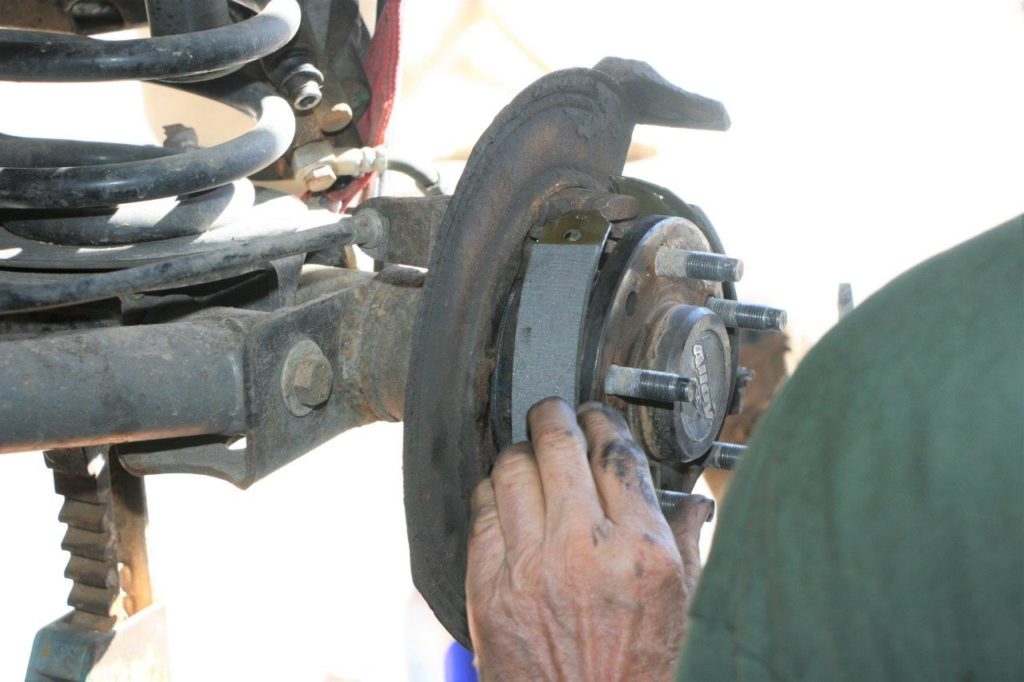The Car Care Council is dedicated to educating vehicle owners about the benefits of regular vehicle maintenance through its “Be Car Care Aware” program. One of the most important vehicle components you need to maintain is the braking system. Neglecting your braking system can lead to increased repair costs, or worse, no brakes at all. Fortunately, paying attention to some of the signs of brake wear can keep you on top of stopping maintenance, save you some money, and keep your car from bouncing off of the guy in front of you.
In a recent post, the Car Care Council pointed out these 10 possible signs of brake wear:
- High pitched squealing
- Vibration in the steering wheel when stopping
- Grinding noises when stopping
- Increased braking distances
- Longer pedal travel
- Feeling the car “pull” to the left or right when stopping
- A weak emergency brake
- A bad smell after coming to a hard stop
- Pedal “fade”
- Not stopping
The most obvious indicator of brake wear on the list is #10, but hopefully you do something about it long before it gets to that pont. The second most obvious sign is an incredibly high pitched squeal when you come to a stop. Brake pad manufacturers include a little piece of metal called an indicator on the pad itself. When the material wears down to the point where less than ¼-inch is left, the metal piece begins to touch the vehicle’s rotor, doing a pretty good impression of fingernails on a chalkboard. Depending on how hard you drive, that usually means you should replace your brake pads within the month.
Occasionally, the indicator rusts and falls off, leaving you with no irritating noise to warn of brake wear. Additionally, many aftermarket and low-cost pads don’t come with a wear indicator at all. For the more observant, there are other signs that your pads need attention. If it takes you longer to stop than it used to, or if your brake pedal travels farther than it did a few months ago, it might be a good idea to get your stoppers checked. Regular pad checks are a good idea and require little more than removing a wheel and knowing what to look for.
Brake rotors are a little trickier, as they can usually last through two or three sets of brake pads before needing to be replaced. If your steering wheel wiggles in your hands when you come to a stop, your rotors are probably “warped,” and it’s a good idea to swap them out. Most shops will offer to “turn” your rotors for you instead of outright replacing them. This means shaving enough metal off of the rotors to make them smooth again. Newer vehicles are equipped with thinner, lighter rotors to save on costs and increase fuel economy. If you’ve got the option, go ahead and replace them.
There are several options for replacement brake parts for your vehicle. While you can never go wrong with what your manufacturer recommends, a variety of aftermarket parts can help you cater your brake system to your driving style. If you find yourself replacing rotors often, you might consider switching to slotted brake rotors. While initially more expensive, the slots disperse heat better than stock, though 99 percent of the time they aren’t necessary for the average driver.


Thanks for the heads up that a person should get their brake pads replaced in case they hear an impression of grinding one’s nails on a chalkboard when stopping the car using the brakes. In this scenario, my suggestion is to hire a local repair service to have it done. Doing this will help keep it fuel efficient, thus have more money to keep it in good shape in the process.
I really appreciated that your article talked about how a high pitch squealing is a possible sign of brake wear. That is exactly what has been happening to my car, and I realize that I should have done more maintenance than I have. I will need to talk to a professional service in my area to help me replace my brakes and give me a better idea on how to take care of my car better in the future.
My breaks failed completely. I mistakenly poured wrong fluid in Master cylinder. It was power steering oil. I am told that I need to replace all rubber parts. Let me know what I should do.
It’s nice that you pointed out how one of the most important vehicle components you need to maintain is the braking system. I’ve been hearing some pretty bad sounds while using the car brake lately and it is a bit worrying. I probably shouldn’t ignore this, so I’ll try to ask a brake repair specialist to look into it.